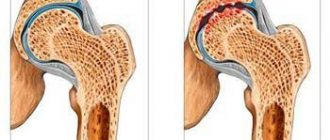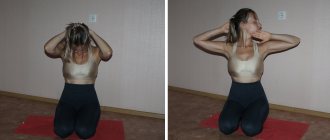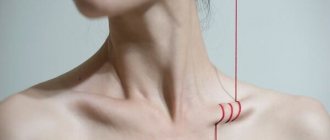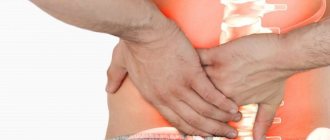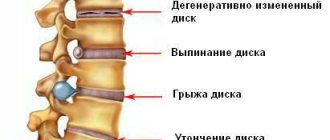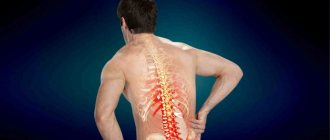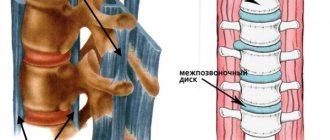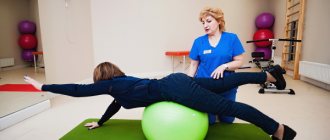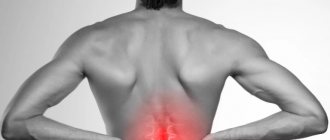Acute lower back pain and severe motor restrictions are the leading symptoms of lumbago, or lumbago. It always occurs suddenly, literally paralyzing a person. Often it is impossible to eliminate such a condition without outside help. After rest and taking analgesics, the pain subsides, but the likelihood of its reoccurrence without proper long-term therapy is very high. How to treat a lumbago in the lower back is decided by the doctor, taking into account the form of the diagnosed pathology, the stage of its course, and the number of complications that have developed.
First aid
When a shooting occurs, such a sharp, piercing pain occurs that the person freezes for a long time in one, often bent, position. First of all, he needs help getting to bed. The patient should take a position in which the intensity of discomfort is reduced as much as possible. You need to lay him on his back with his legs bent at a right angle at the hip and knee, and his shin resting on a stool or chair. Sometimes you feel better by lying on your stomach with your legs straight. To eliminate pain, you need to take a tablet with an analgesic effect. Non-steroidal anti-inflammatory drugs quickly relieve pain:
- Nurofen;
- Ketorolac;
- Celecoxib;
- Diclofenac;
- Ketoprofen.
If you don’t have NSAIDs in your home medicine cabinet, you can use regular Paracetamol. Neurologists also recommend taking a diuretic (Furosemide, Veroshpiron) or an antihistamine (Loratadine, Tavegil). These remedies quickly cope with inflammatory edema, which often provokes pinched nerve roots.
Relieving lower back pain
The video by neurologist Radion Ignatiev is divided into two parts. The first shows the classic exercises and explains the purpose of each of them. Pulling your legs towards you serves to strengthen the thigh, lower leg, and piriformis muscles. Lunges – for the quadriceps. The “Cat” maneuver and low squats develop the dynamism of the spine.
With gradual development, the methods will be learned even by an elderly person. The second section talks about a less popular technique that is ignored in Russian-language sources. The Flossing system forms the correct functioning of nerve endings. For a better understanding, Ignatiev shares theoretical knowledge about the principle of operation of the spinal cord, showing the main points on the model.
Warming up the sore spot
If lumbago is not accompanied by inflammation, then the patient’s well-being is improved by warming up. Under the influence of heat, blood circulation accelerates in damaged tissues. The cells begin to receive the necessary nutrients and oxygen. And as a result of normalization of microcirculation, waste, toxins, and tissue breakdown products are evacuated. What is used for warming procedures:
- warmer;
- thick scarf;
- a linen bag with hot flaxseeds or sea salt;
- products for local application with red capsicum extract, bee or snake venom, gum turpentine;
- bath with warm water.
Improved trophism has a beneficial effect on metabolic rate - restoration of damaged connective tissue structures occurs much faster.
Drug treatment
Treatment tactics depend on the pathology that provoked the lumbago. Most often, lower back pain is caused by muscle spasm, so taking medications that relax skeletal muscles is necessary. And sometimes inflammation of the spinal roots occurs, which requires other treatment methods. A particularly difficult situation occurs when there is a shooting caused by a prolapsed intervertebral disc.
NSAIDs
Nonsteroidal anti-inflammatory drugs (NSAIDs) are always the first choice drugs in the treatment of lumbago. First, drugs for intramuscular administration are used - Meloxicam, Ortofen, Diclofenac, Ketorolac.
Then the therapeutic result is secured by taking pills. Patients are prescribed NSAIDs with the active ingredients ketoprofen, ibuprofen, diclofenac, lornoxicam. Due to possible damage to the gastric mucosa, they are combined with proton pump inhibitors - Omeprazole, Esomeprazole, Pantoprazole.
Tranquilizers
Frequent lumbago causes not only physical, but also psychological discomfort. The clinical picture is replenished with depression, neuroses, increased nervous excitability, and psycho-emotional instability. The treatment regimens for such patients include sedatives - Novo-Passit, Tenoten, tinctures of valerian, motherwort, St. John's wort. If they are ineffective, a course of antidepressants, neuroleptics, and tranquilizers is prescribed: Adepress, Phenazepam, Phenibut, Grandaxin, Adaptol.
Sleeping pills
A sleep disorder usually has a psychological basis due to the person’s rejection of the health problems that have arisen and the constant expectation of a new attack of pain. Insomnia often develops against the background of neuroses and depression. So that the patient can fully rest at night and not feel lethargic and weak in the morning, a course of Persen, Glycine, Melaxen, Zolpidem, Donormil is recommended. If the patient has already been prescribed tranquilizers or sedatives, then no additional medications are required.
Muscle relaxants
In addition to painkillers, patients are prescribed muscle relaxants from the first days of treatment. At the initial stage, parenteral administration of Mydocalm is practiced. It contains not only tolperisone, which eliminates muscle spasms, but also the anesthetic lidocaine, which quickly copes with pain. Subsequently, Sirdalud, Baklosan, and Baclofen tablets are included in treatment regimens. They are not intended for long-term use due to severe side effects.
Chondroprotectors
The most common cause of lumbago is degenerative-dystrophic pathologies of the lumbar spine, usually osteochondrosis. It is accompanied by a gradual thinning and thickening of the cartilaginous intervertebral discs. Chondroprotectors are the only group of drugs that can partially restore cartilage tissue. Therefore, they are necessarily used to prevent lumbago. For 1-2 weeks, injection solutions of chondroprotectors are used - Dona, Chondroguard, Alflutop, Rumalon, Chondroitin-Akos. Then the patient is prescribed long-term (from 3 months to 2 years) use of Structum, Teraflex, Chondroxide, Artra tablets.
Application of ointments
Typically, external agents from two clinical and pharmacological groups are used in the treatment of lumbago. The first is NSAIDs, which have anti-inflammatory, analgesic, and anti-edematous effects. These are ointments and gels Indomethacin, Voltaren, Fastum, Artrosilene, Finalgel.
The second is a product for local application to the lower back with a warming, distracting and locally irritating effect. These include Capsicam, Nayatox, Viprosal, Finalgon, Apizartron.
Sometimes chondroprotectors are prescribed in the form of ointments, creams, and gels. But their cartilage tissue regenerating activity does not have a reliable evidence base.
Adviсe
The Internet gives freedom to all categories of people: both professionals and amateurs. As a result, the World Wide Web becomes full of harmful and dangerous advice. Following them, the patient only increases the degree of neuralgia. Exercise therapy should take into account the characteristics of the individual patient. The video provides an overview of chargers that are mistakenly positioned in many sources as “universal.”
- To lift weights from the ground, such as grocery bags, bend your knees rather than your back.
- Don't stand or sit in one position for long periods of time.
- Avoid sleeping on your back or stomach; both methods place additional pressure on the spine. The best sleeping position is on your side with a pillow between your knees.
- Avoid carrying heavy bags and packages on one shoulder. Take a backpack that you can carry on your back.
- Use a firm mattress rather than one that is too “soft and fluffy.” A medium to high-firm mattress provides good back support.
- Try to maintain a schedule where you regularly walk, swim or run.
- Set limits for yourself. Don't strain your back. Explain to the people who live and work with you that there are some things you won't be able to do because of your back pain.
Therapeutic exercise and gymnastics
Performing special gymnastic exercises often replaces a course of taking chondroprotectors and analgesics. Immediately after the lumbago is relieved, a physical therapy doctor is involved in treatment. He explains to the patient that moderate physical activity has a complex effect on the lumbar segments of the spine:
- strengthen the muscle corset;
- accelerate regeneration processes;
- stabilize the vertebrae and discs, preventing their displacement.
The result of training is an increase in strength, firmness, and elasticity of ligaments, tendons, and muscle fibers.
Diagnostics
To diagnose possible diseases in the spine, it is necessary that you consult a neurologist as soon as possible. What does comprehensive diagnostics include:
- conversation with the patient (to identify painful areas and determine the nature of pain);
- local palpation examination of the spine;
- special diagnostic (active and passive) tests to assess the functioning of the musculoskeletal system;
- reflex diagnostics.
comprehensive examination to determine:
- muscle conditions (hypertonicity, hypotonicity);
- presence/absence of sensory impairment;
- presence/absence of decreased joint mobility;
In addition, the doctor may prescribe additional examination methods, such as:
- MRI;
- Ultrasound;
- X-ray;
- lab tests.
Massage and manual therapy
Chiropractors use a variety of healing techniques. Improvement in the condition of the lumbar structures occurs due to the elimination of spasms of skeletal muscles and the restoration of the functionality of the muscular-articular apparatus. The chiropractor has a targeted effect on the vertebral bodies, increasing the distance between them, preventing displacement and protrusion. Such treatment methods are especially effective in combination with classical, acupuncture, and vacuum massage.
Physiotherapy
5-10 sessions of physiotherapeutic procedures can improve blood flow and lymph circulation. You can prevent the occurrence of lumbago with the help of laser therapy, magnetic therapy, acupuncture, amplipulse therapy, UHF therapy, and shock wave therapy. To speed up the recovery of tissues affected by pathology, patients are prescribed applications with paraffin and ozokerite, mud therapy, and hirudotherapy.
Laser therapy is part of the therapy for acute lower back pain.
Traditional therapy
Traditional medicine is not able to eliminate both the cause of the lumbago and the acute symptoms that accompany it. They are used during the recovery period after the main treatment.
Herbal compresses
You can get rid of weak, aching, pressing pain in the lower back during the remission stage with the help of compresses. Large fresh leaves of horseradish, burdock, cabbage are ground until drops of juice appear and generously smeared on one side with thick flower honey. Apply to the lower back, cover with plastic wrap, a scarf or thick cloth. The duration of the procedure is 2-3 hours.
Decoctions
Herbal infusions and decoctions are used for lumbago both for medicinal purposes and as a drink. St. John's wort, corn silk, marigold, thyme, lemon balm, and oregano are commonly used. A tablespoon of dry plant material is poured with 2 cups of boiling water, simmered over low heat for 5 minutes, and left for an hour. Cool, filter, drink 100 ml after meals 3-4 times a day. Decoctions have a mild diuretic, anti-inflammatory, analgesic effect.
Herbal collection.
How not to make the situation worse
When providing first aid for lumbago, cold or heat is not used. Until the cause of acute pain is determined, you should not apply ice packs, a heating pad, or lubricate it with external warming agents to your lower back. Such procedures will cause the inflammatory process to spread to healthy vertebral structures.
And applying cold compresses to the lower back will lead to even greater muscle spasms and increased pain intensity.
For men
For men, we can recommend all of the exercises listed - they are part of the general complex. You can add one more to it, which is necessary for muscles. In a standing position, spread your legs wide, toes to the sides. The back is straight, level, shoulders are lowered, the abs are tense. Exhaling, slowly lower yourself, while spreading your knees to the sides.
Separately, it is worth dwelling on hyperextension. It does not load the spine and lower back, and can be performed in case of pinched nerves or herniated discs. This is accompanied by great muscle effort. The exercise is more suitable for men (although it can also be performed by women).
We recommend reading: Is it possible to perform hyperextension with a lumbar hernia?
You can do hyperextension on a special simulator with leg and hip clamps, or you can create a similar one at home. The idea is that a man lies down with his stomach on an inclined (upward) flat surface, which ends at the level of the lower abdomen. The legs are held in place by a special bolster. Then you need to bend down. Keep your hands clasped behind your head.

